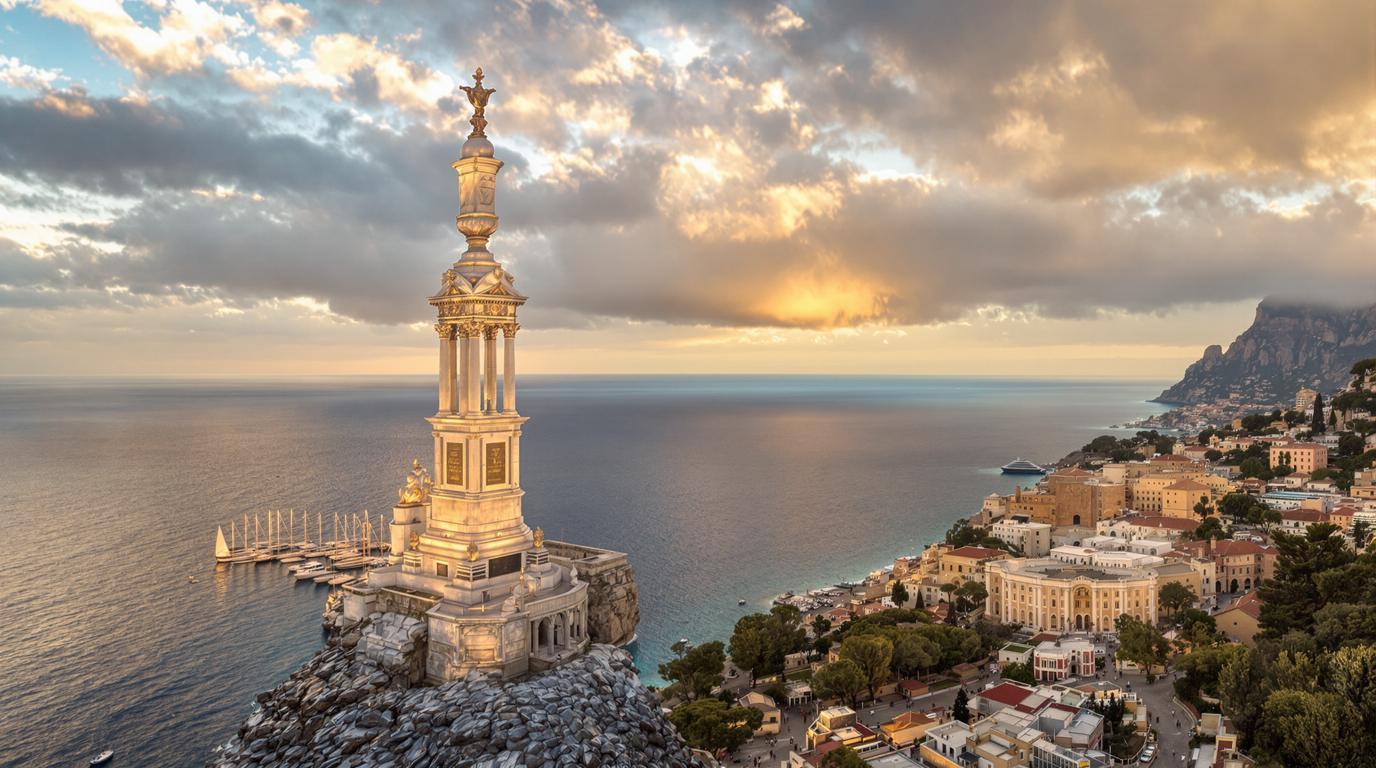Perched 1,800 feet above the glittering Mediterranean, La Turbie holds one of France’s most dramatic secrets: an ancient Roman trophy monument that once stood nearly 160 feet tall. This sleepy French village on the Côte d’Azur offers something increasingly rare on the glamorous Riviera—authentic charm without the crowds that flood nearby Monaco and Nice.
The emperor’s statement that still dominates the skyline
The Trophy of Augustus, built in 6 BC, stands as a powerful reminder of Roman dominance. Emperor Augustus commissioned this monumental structure to commemorate his victory over 45 Alpine tribes, essentially marking the boundary between Italy and Gaul. While only partially intact today, its imposing presence continues to command respect.
This ancient Roman balcony provides what might be the most spectacular view in southern France—the entirety of Monaco spreads below like a miniature kingdom, with the Mediterranean stretching to the horizon.
“When the morning light hits the monument, the limestone glows golden against the blue sea. It’s a view that hasn’t changed in 2,000 years,” explains Marie Laurent, local historian and tour guide.
A medieval village frozen in time
Beyond the Roman trophy, La Turbie’s old town feels like stepping through a time portal. Narrow cobblestone lanes wind between stone houses adorned with bright flowers, occasionally opening to sun-drenched squares where locals play pétanque in the late afternoon.
Unlike its coastal neighbors that cater primarily to tourists, La Turbie maintains its authentic French character. You won’t find souvenir shops here—instead, discover family-run bakeries and small cafés where residents gather for their morning coffee.
The village where celebrities hide in plain sight
While Monaco below draws the superyacht crowd, La Turbie has become a discrete retreat for celebrities and Formula 1 drivers seeking privacy. Many maintain homes here, blending seamlessly with locals in the village’s understated cafés.
The Monte-Carlo Golf Club, quietly tucked above the village, draws golf enthusiasts who appreciate both championship fairways and Mediterranean panoramas—without the fanfare of more publicized courses.
Where French and Italian cultures blend deliciously
La Turbie’s proximity to the Italian border creates a fascinating culinary fusion. At Café de la Fontaine, the menu features both classic French bistro fare and Italian-influenced specialties that reflect the region’s complex heritage.
For an unforgettable dining experience, the Michelin-starred Hostellerie Jérôme occupies a 13th-century building where Chef Bruno Cirino creates Mediterranean masterpieces that draw gourmands from across Europe.
“Our cooking reflects our geography—we’re French with an Italian soul,” notes Chef Cirino. “The ingredients we use have crossed this border for centuries.”
The secret hiking path few tourists discover
For adventurous travelers, La Turbie offers access to one of the Riviera’s most spectacular hikes. The path to Fort de la Revère winds through fragrant pine forests before revealing panoramic views that stretch from colorful coastal towns to snow-capped Alps in the distance.
Unlike the packed coastal trails, you’ll likely share this path only with locals walking their dogs or gathering wild herbs that grow abundantly along the limestone slopes.
Beyond the village: day trips that transform your experience
La Turbie serves as an ideal base for exploring both the French and Italian Rivieras. Within an hour, you can be sipping coffee in charming alpine towns or relaxing on hidden beaches that rival those of more exotic destinations.
The stunning Grande Corniche road, made famous in Alfred Hitchcock’s “To Catch a Thief,” winds along the coast offering vistas that capture the essence of Riviera glamour—but with far fewer tourists than you’d encounter below.
When to experience La Turbie at its best
Visit in May or September to enjoy perfect weather without summer crowds. The village’s annual Roman festival in late June recreates ancient traditions with impressive authenticity, while winter offers crystal-clear views that extend to distant mountain peaks.
La Turbie reveals what the French Riviera must have been like before mass tourism—a place where spectacular beauty meets authentic daily life. Here, 2,000 years of history doesn’t feel like a museum exhibit, but rather a living backdrop to a community that still treasures its exceptional heritage.
